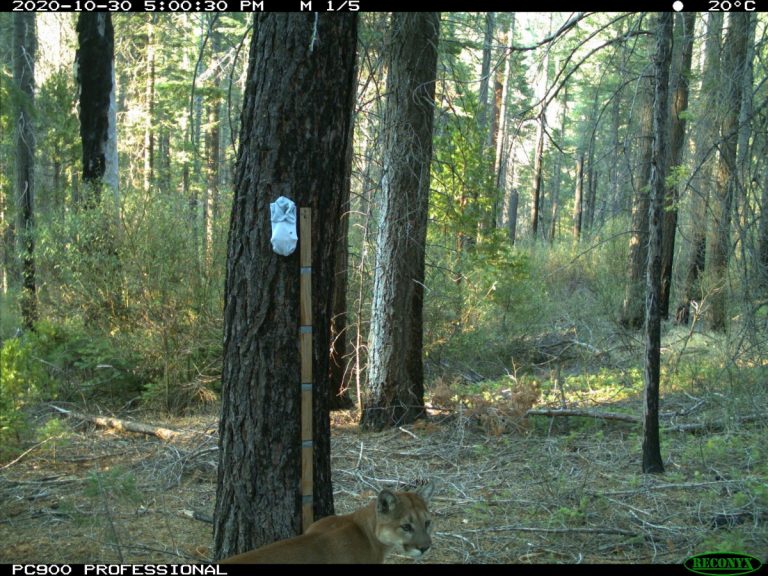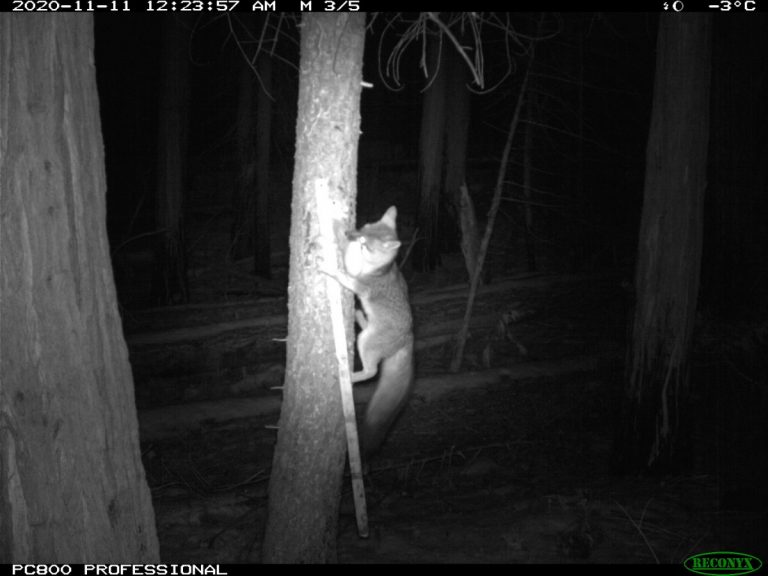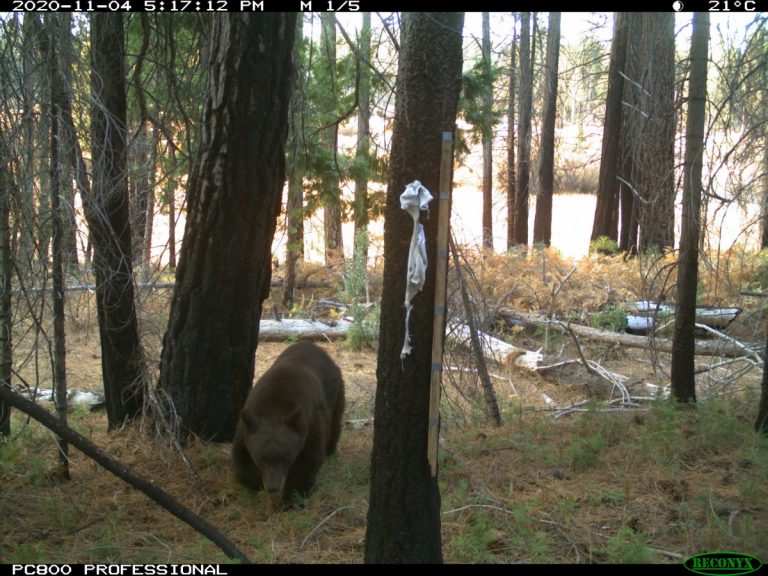
For 30 years, CSERC has used photo-detection cameras to search for rare wildlife.
We consistently partner with the US Forest Service (and also at times with the Park Service) to survey areas where sensitive, threatened, or endangered wildlife species might be found. While cameras can confirm that an animal is present, not getting a photo of a rare animal doesn’t prove absence. It may be that the animal is just being elusive. But when at-risk wildlife -- such as the American marten, Pacific fisher, Sierra Nevada red fox, or ringtail cat – do get photographed at CSERC’s infrared and motion-triggered camera stations, that helps the USFS or Park Service to know where those at-risk species need stronger protection for that area’s critical habitat.
This fall CSERC was asked by the Forest Service to do surveys for the rare Pacific fisher in a broad area of the national forest near Yosemite National Park. Just in the first weeks of CSERC cameras being set up in remote locations, we had visits from many predators! See some examples below.
Mountain LIONS,
Gray FOXES, AND
Black BEARS! OH MY!



CSERC tries to keep photo-detection cameras up and functioning year-round, even during difficult winter conditions. While it can be challenging to access our cameras in snow or in rainy weather, winter can actually be one of the most effective times to do wildlife surveys. Not only are fewer people out in the forest to scare away reclusive wildlife, but when snow blankets the landscape, the diversity of wildlife tracks visible in the snow can unveil a scattered web of wildlife movements and interactions.

